
it’s been a while since we looked at swedish brith rates and the feb 2023 data is now out, so time for an update:
TLDR: there is no sign of recovery and rates remain at severely depressed levels after drops that are multiples of anything else in the data of the last 25 years. and yet no government or health agencies seems curious or even interested.
the most plausible cause for this is the covid vaccines.
to cover the base priors again (skip if you’ve been reading these series):
correlation is not causality. these associations are not and cannot be positive proof. but they can certainly be cause for suspicion and alarm.
such suspicion is greatly bolstered by strong, independent, and a priori reasons to suspect fertility effects from covid vaccines as they are known to collect in testes and ovaries and the ability of mRNA drugs to trigger ongoing auto-immune issues is well known.
we have specific clinical studies that show not only sharp suppression in sperm total motile counts post covid vaccination, but that appear to show that something on the order of 20% of subjects are not recovering from this and may be experiencing near total loss of motility. effects on eggs and ovaries seem less well studied (itself a somewhat puzzling outcome) but could be similar or perhaps worse as eggs, once damaged, are gone and do not regenerate and changes in menstrual cycles have been widely documented.
so, we’re not just seeking out seeming or spurious correlation here. we have sound reason to suspect an effect rooted in demonstrated clinical biology and are looking at society scale data to see if it is manifesting. that is a much higher quality form of evidence than pure associative data mining. it is still not “proof” in the sense of RCT or being able to look at births by vaccine status and seek curve separation between the two cohorts, but it is not a result to readily dismiss or hand wave away either. especially as the period of “this might be an echo from everyone going travelling in summer 2021” per my attempts at “testable hypotheses” from back in july 2022 has now passed without any improvement, this looks to me to be reaching the point of having to be accepted as the odds on best theory.
OK, so let’s look at the data: (all data from SCB.SE)
as ever, let’s start with the raw data:
2023 is off to a very slow start.
it can be easier to see if you visualize it this way:
january and february are down 7.7% and 7.8% respectively vs 2022 and a whopping 9.9% and 13% vs 2021 continuing the “there is no precedent for this in the available data” trend.
the smoking gun remains here:
this drop commenced right when vaccination picked up and is not recovering from these really low levels despite the highly reflexive nature of this data. i have made the 2023 comps (red) vs 2021 to provide visual continuity (as staying at the same low level would look like recovery as change rose to 0) but this is obviously not the case. as we saw above, even vs the depressed levels of 2022, 2023 is down 7.7%-7.8%.
the R2 here is a staggering .83, which is incredibly high for a series this multifactorial and implies that this one variable looks to account for over 80% of cause. that is not a level of association one would be wise to dismiss blithely.
it’s possible to extrapolate full year births from jan-feb with surprisingly high accuracy because births by month are so predictable you’d think it was some sort of seasonal phenomenon. (perhaps it is?) the % of annual births in jan-feb for 2019-2022 were: 16.2%, 16.5%, 15.9%, 16.2% and average to 16.2%. i used that to extrapolate 2023. (red)
as a year over year drop we get this:
while this looks like a recovery from 2022, it’s not. this is a BAD number and represents the worst annual decline in the series apart from the prior year and bad years tend to be followed by good ones. this is still a ~2.2 std deviation downside excursion in a series with pretty normal curve distribution (a bell curve).
it’s not exactly fair to comp it to 2021 as it makes the drop look larger, but it’s useful for perspective, so i generated the whole series comped vs 2 years prior to date measured. (2023 vs 2021, 2022 vs 2020 etc)
so, seemingly not off to a great start no matter how you slice it.
one could argue that this is a bit unfair as jan and feb 2022 were not yet at the sort of “low plateau” reached by march and april and sustained (with some seeming downward drift later) through the rest of the year and i think that this is a fair point: barring a serious new drop in natality, march and april are going to be lesser drops from prior year in % terms simply by virtue of being compared to a more suppressed number.
that seems like the odds-on expectation.
but if 2022 was driven just by some behavioral issue, we’d expect reflexive reversion and a move to meaningfully positive territory on year on year growth and that would seem to be the real test.
if instead we see a continued delaine in line with previous trends (just offset by a step function in 2022) then that stops looking societal and starts to look like exogenous cause from vaccines as a definitive attribution.
we’ll know more in a couple months.
as ever, i really hope to be wrong here, but the data is just not doing me in favors in that regard and this is about getting at truth, not cozy stories.
i wish i had better news to report.
i remain distraught that the countries experiencing this are not making greater efforts to determine the cause. (or if they are, they are sure not sharing it) this seems an awfully serious matter to ignore and if the jabs caused this, we need to know and the data exists to comp birth rates by vaxx status 9 months prior and really put this to bed, but it’s not being shared. instead we’re getting a gish gallop of badly conceived and slanted studies on IVF, late term pregnancy, and miscarriages that are slanted, riddled with left truncation issues, and generally not suited for purpose.
at a certain point having “the officials” choose such a path rather than the simple one with simple definitive data that we know they have starts to look dispositive and like yet another game of “hide the ball.”
looking at “miscarriages'” or effects on the pregnant seem to me to be poor proxies as much of the issue looks to be around conception, not taking babies to term. it’s a classic example of looking in the wrong place.
births are a highly multi-factorial and reflexive series and so the “well, it did not happen here in this year” is not the level of falsification it otherwise would be especially in light of this level of correlation on timing and a priori reason to expect causality. years with big drops are generally followed by big up years. the countries that did not see huge drops in 2022 generally had severe drops in natality in 2021 and so the comp is easy and the trend should be up (and yet is often still a bit down). it’s just opposing vectors. this trend and timing are FAR to prevalent to be dismissed based on such weak evidence.
it’s simple to get to the bottom of this for real. stop obfuscating and just release the data on birth rates by vaxx status.
come on vikings… do better.




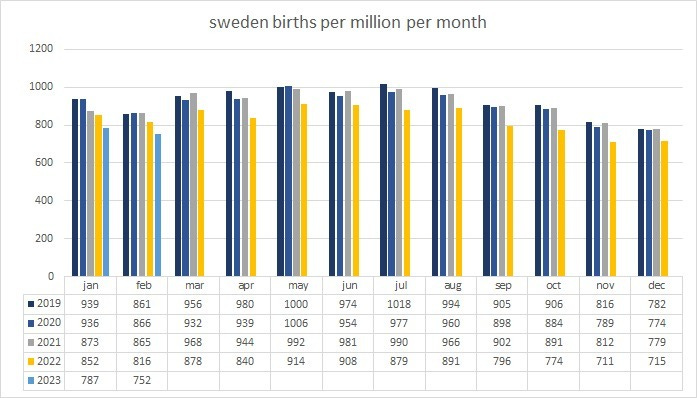
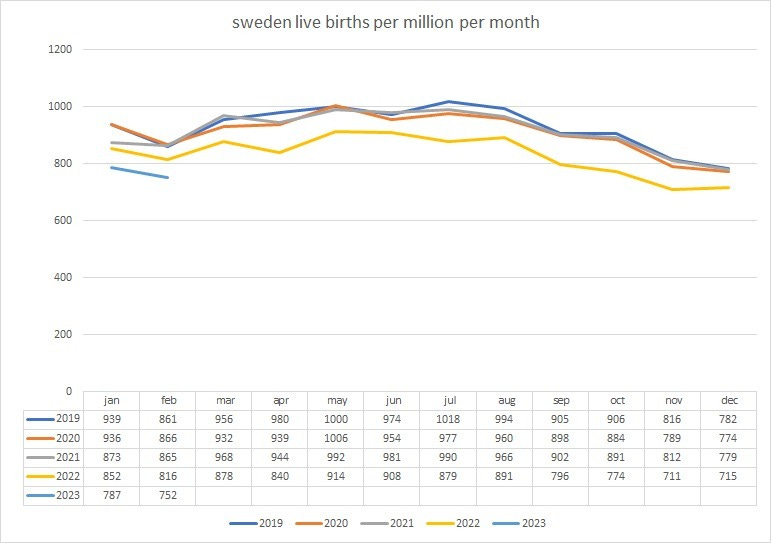
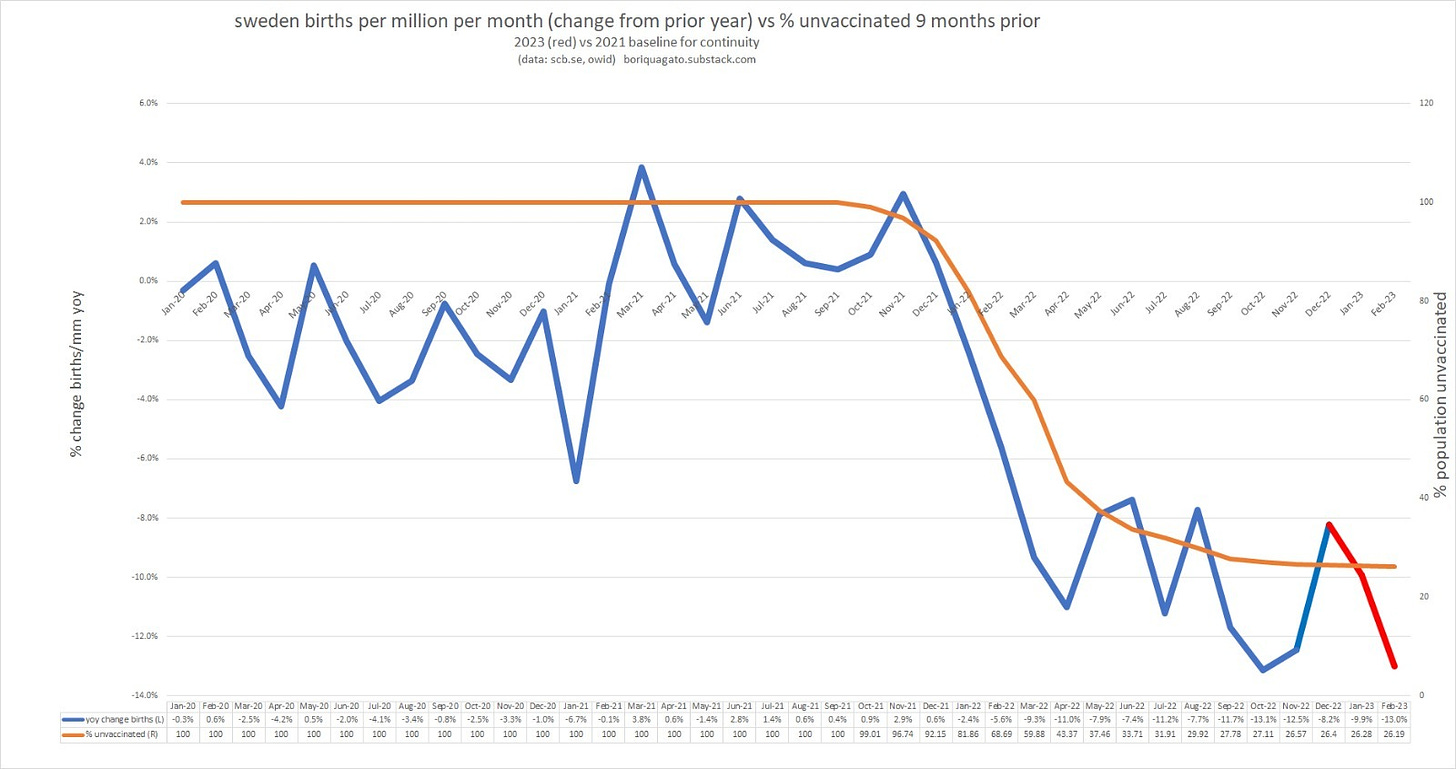
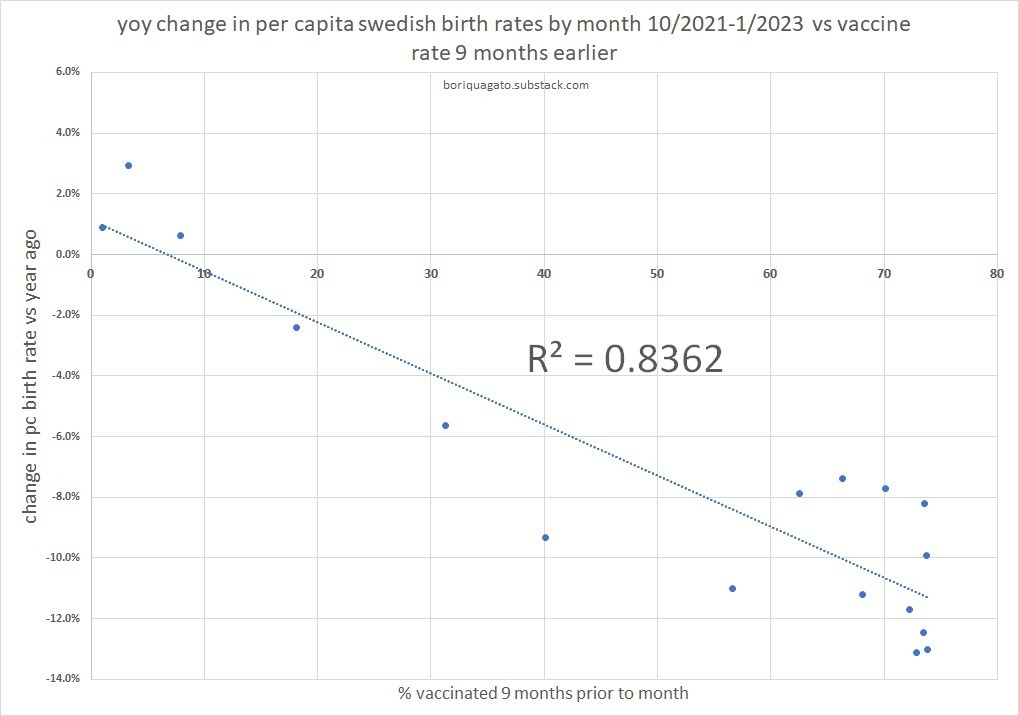
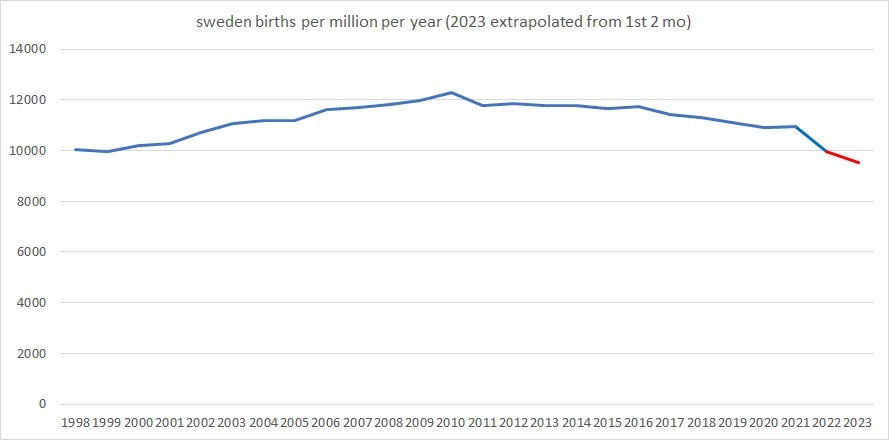














The last thing these countries want to do is release the vaxx status data.
Saw numbers from Germany showing the same.
The guy who wrote the substack also looked at getting married numbers and saw that those are down a lot too. Might be another correlation to consider in this mess?